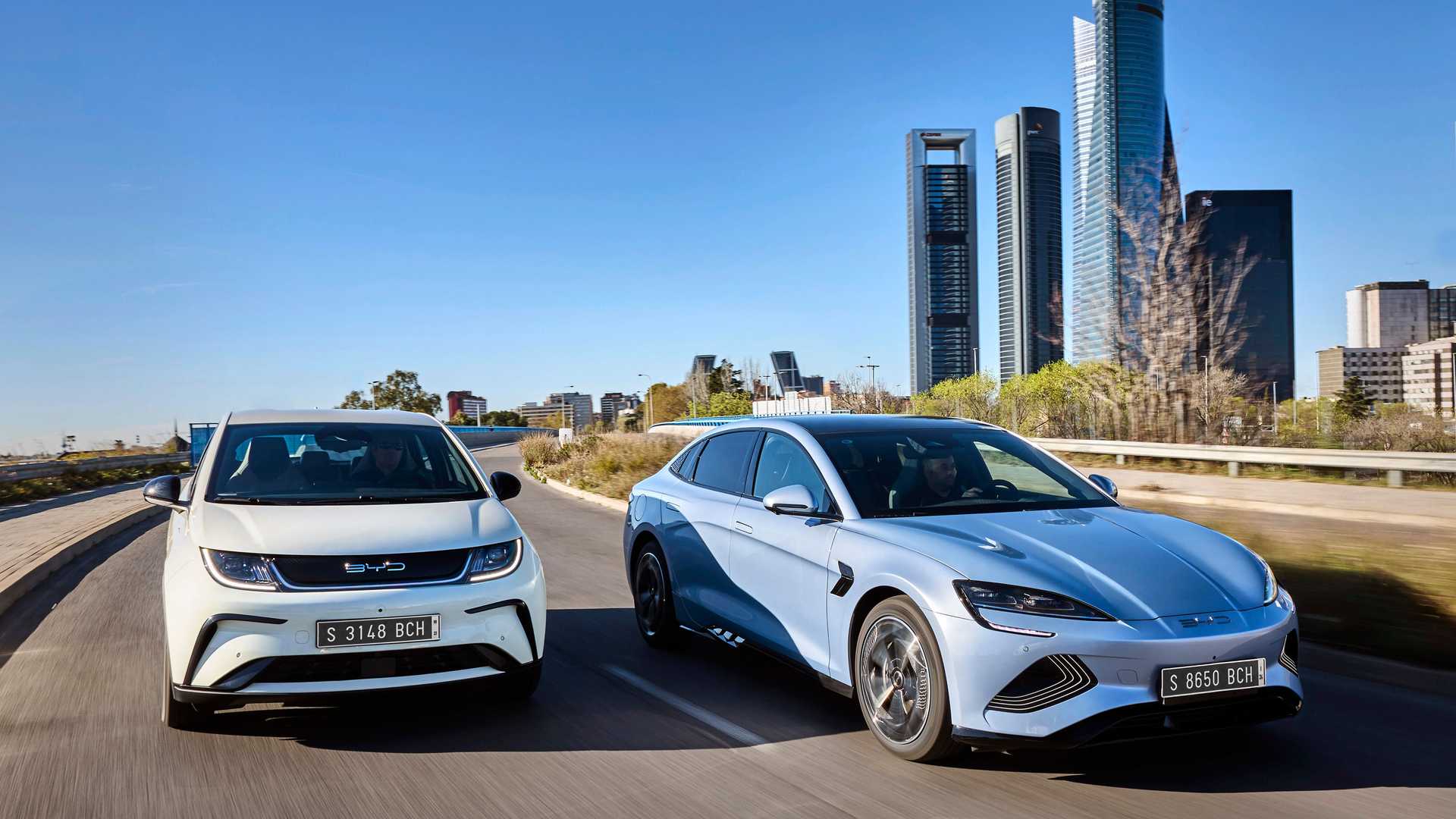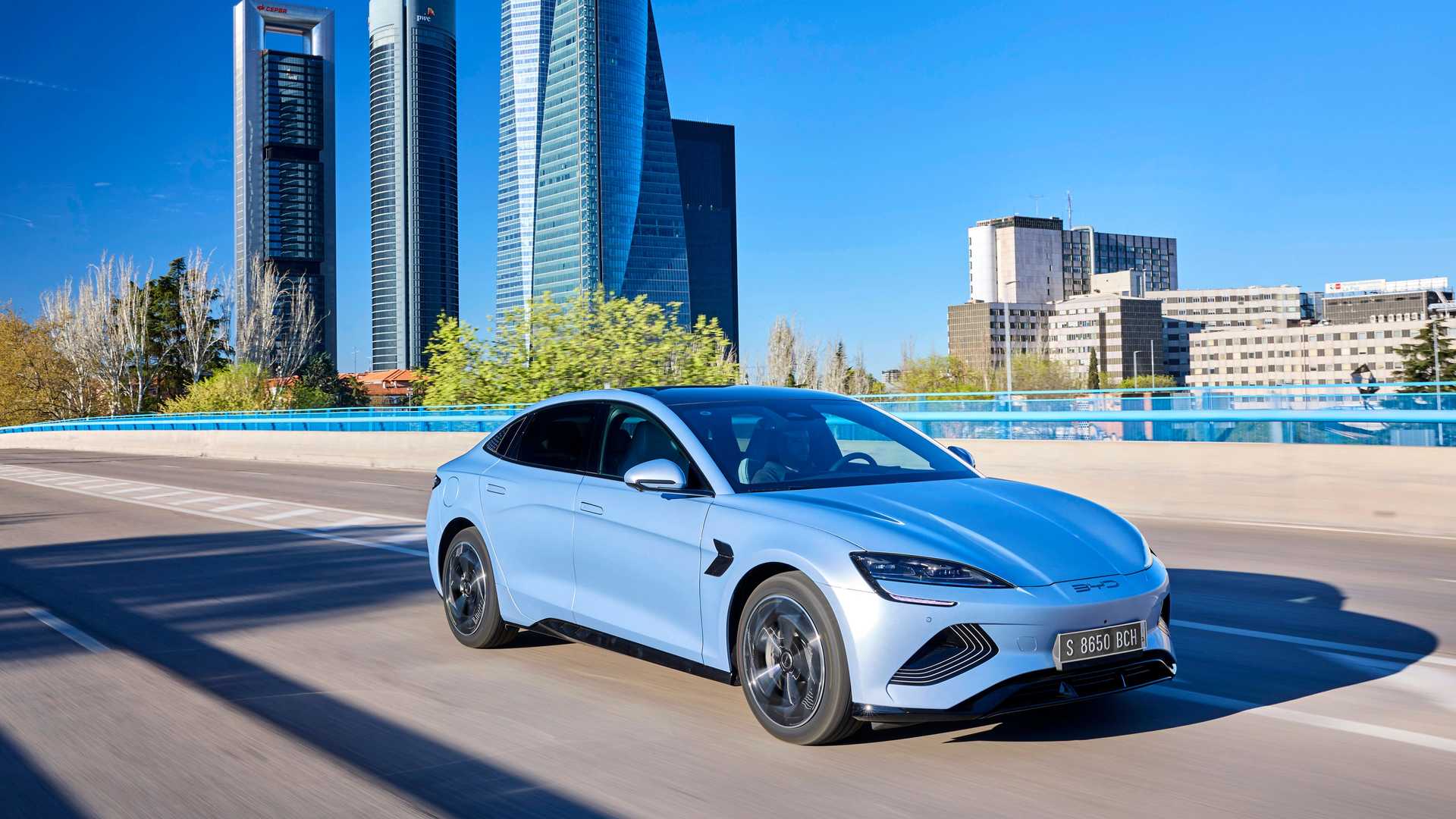Chinese automaker BYD (Build Your Dreams) is hitting the European market with its latest-generation electric vehicles, and the good folks at the Fully Charged Show got their hands on a United Kingdom-spec Seal, which is a direct competitor for the Tesla Model 3.
Coincidence or not, both electric sedans are built in China, so the adage that cars made in this part of the world can’t match the quality of Western-built vehicles is out of the question from the get-go, as Tesla has proved time and time again that its Shanghai Gigafactory can keep up and even surpass its American facilities in terms of build quality and production speed.
But by the looks of it, BYD has gone one step further in terms of interior quality, as the video embedded at the top of this page mentions the excellent cabin, which is just one step below luxury brands like Mercedes-Benz.
Gallery: 2023 BYD Seal in European specification








What might make traditional car customers more likely to look at BYD’s offerings is the more conventional interior layout, which features a digital instrument cluster behind the steering wheel, a head-up display for the driver, and a central touchscreen display that rotates between landscape and portrait orientations at the flick of a switch. By contrast, Tesla’s entry-level EV only has a central touchscreen and some buttons on the steering wheel.
There are also plenty of buttons for things like the audio system volume and climate control, as well as steering column stalks, which have famously disappeared from the updated Model 3 “Highland.”
An energy-efficient heat pump comes as standard on the BYD Seal. In fact, the standard equipment list is quite generous and includes a panoramic roof, an electric tailgate, split-folding rear seats, a 360-degree camera system, adaptive cruise control, and a host of driving assistance systems like rear collision warning, traffic jam assist, and traffic sign recognition.
As a matter of fact, there are no optional extras on the Seal. Instead, there are two trim levels–Design, which comes with a rear-mounted 308 horsepower motor–and Excellence-AWD–which adds a front motor for an all-wheel drive system that’s good for 529 hp, as well as a head-up display.

BYD’s Blade battery, which uses lithium iron phosphate (LFP) chemistry and is a structural part of the car’s body, powers both versions and has a usable capacity of 82.5 kilowatt-hours. That’s enough for a WLTP combined driving range of 354 miles (570 km) in the rear-wheel drive model and up to 323 miles (520 km) in the AWD trim.
As for pricing, it’s pretty much neck and neck, at least in Germany. Here, the rear-wheel drive Seal starts at €44,913, while the AWD version ups the price to €50,990. Meanwhile, a Tesla Model 3 RWD goes for €42,990 and a dual-motor Long Range starts at €51,990.
Go ahead and see for yourself what the Seal is all about in the first drive review embedded at the top of this page. Then, head over to the comments section below and let us know what you think.
In recent years, the electric vehicle market has seen significant growth, with more and more manufacturers entering the fray and offering their own take on sustainable transportation. One such contender is the BYD Seal, a new electric sedan that has been generating buzz as a potential rival to the popular Tesla Model 3. In this Fully Charged review, we take a closer look at the BYD Seal to determine if it is indeed a worthy competitor to the Tesla Model 3.
The BYD Seal is a sleek and stylish electric sedan that boasts an impressive range of over 300 miles on a single charge. With a top speed of 115 mph and a 0-60 mph time of just 4.4 seconds, the Seal offers performance that rivals some of the top electric vehicles on the market. The interior is spacious and well-appointed, with a modern design that features high-quality materials and advanced technology features.
One of the key selling points of the BYD Seal is its price point, which is significantly lower than that of the Tesla Model 3. Starting at just $35,000, the Seal offers a more affordable option for consumers who are looking to make the switch to electric vehicles. This makes it a compelling choice for budget-conscious buyers who want to experience the benefits of electric driving without breaking the bank.
In terms of performance, the BYD Seal delivers a smooth and quiet driving experience that is comparable to that of the Tesla Model 3. The electric motor provides ample power and torque, allowing the Seal to accelerate quickly and handle with precision. The regenerative braking system is also well-tuned, providing a seamless transition between regenerative and mechanical braking.
One area where the BYD Seal falls short compared to the Tesla Model 3 is in terms of charging infrastructure. While Tesla has a vast network of Supercharger stations that allow owners to recharge their vehicles quickly and conveniently, BYD currently lacks a similar infrastructure. This could be a significant drawback for potential buyers who rely on fast charging capabilities for their daily commute or long-distance travel.
Overall, the BYD Seal is a worthy competitor to the Tesla Model 3, offering impressive performance and features at a more affordable price point. While it may not have the same charging infrastructure as Tesla, the Seal still provides a compelling option for consumers who are looking to make the switch to electric driving. With its stylish design, spacious interior, and impressive range, the BYD Seal has the potential to carve out a niche for itself in the competitive electric vehicle market.
